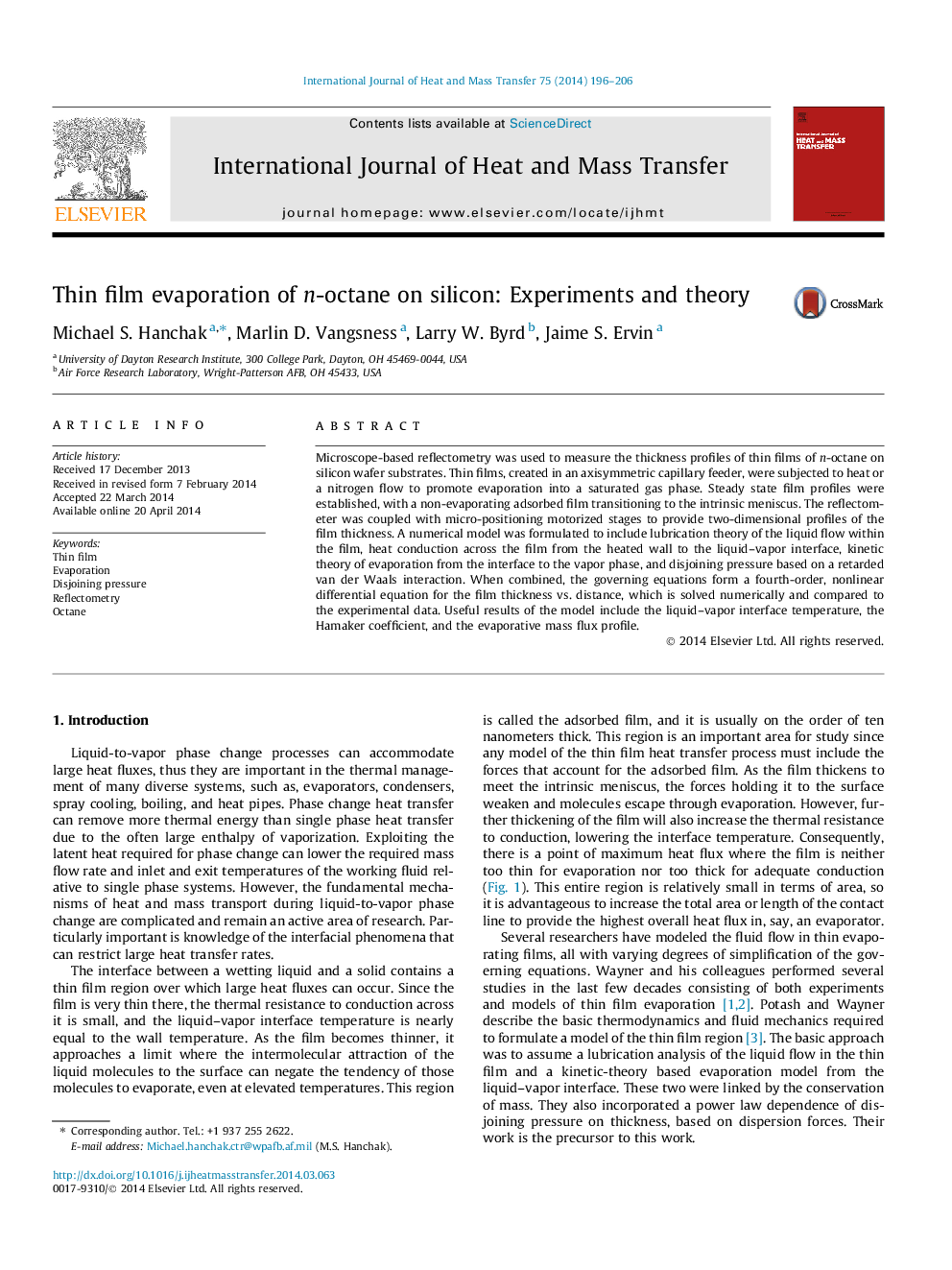| Article ID | Journal | Published Year | Pages | File Type |
|---|---|---|---|---|
| 7056918 | International Journal of Heat and Mass Transfer | 2014 | 11 Pages |
Abstract
Microscope-based reflectometry was used to measure the thickness profiles of thin films of n-octane on silicon wafer substrates. Thin films, created in an axisymmetric capillary feeder, were subjected to heat or a nitrogen flow to promote evaporation into a saturated gas phase. Steady state film profiles were established, with a non-evaporating adsorbed film transitioning to the intrinsic meniscus. The reflectometer was coupled with micro-positioning motorized stages to provide two-dimensional profiles of the film thickness. A numerical model was formulated to include lubrication theory of the liquid flow within the film, heat conduction across the film from the heated wall to the liquid-vapor interface, kinetic theory of evaporation from the interface to the vapor phase, and disjoining pressure based on a retarded van der Waals interaction. When combined, the governing equations form a fourth-order, nonlinear differential equation for the film thickness vs. distance, which is solved numerically and compared to the experimental data. Useful results of the model include the liquid-vapor interface temperature, the Hamaker coefficient, and the evaporative mass flux profile.
Related Topics
Physical Sciences and Engineering
Chemical Engineering
Fluid Flow and Transfer Processes
Authors
Michael S. Hanchak, Marlin D. Vangsness, Larry W. Byrd, Jamie S. Ervin,
